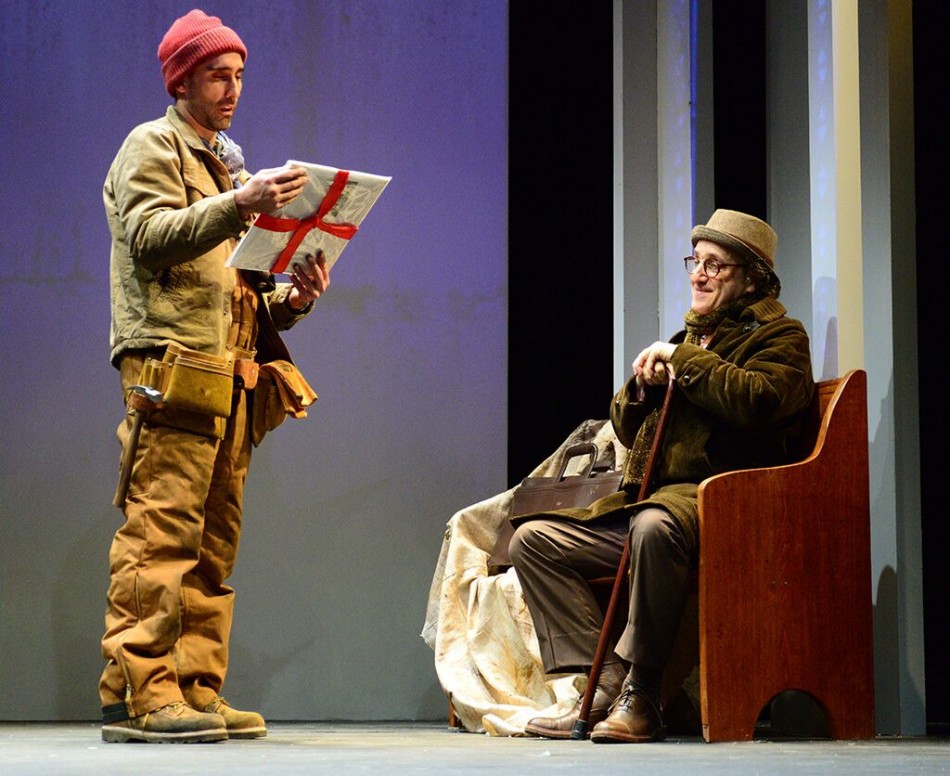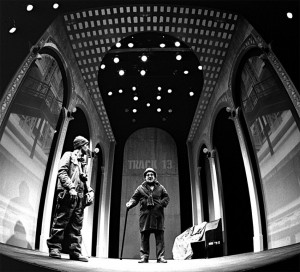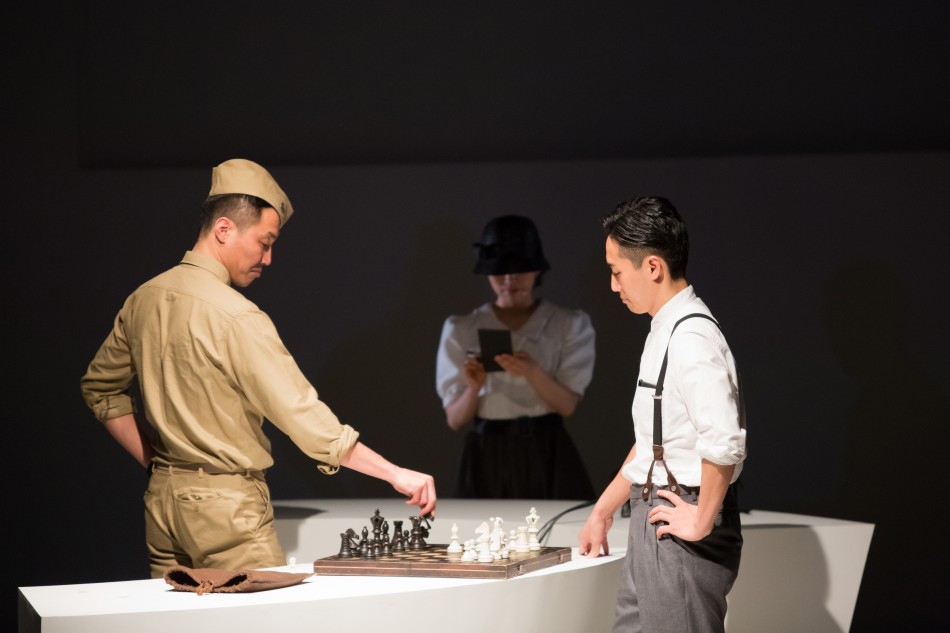by: Beatrice Williams-Rude
The Eternal Space is a strangely gripping piece that works on several levels. The obvious is a tribute to the glass-and-iron structure that was the magnificent old train station in the heart of Manhattan.
A cultured elderly gentleman keeps putting up posters in an attempt to avert the razing of the structure.
A young man whose job is to demolish the station keeps photographing it. The young man, Paul Abbott, is irritated by having to remove the posters and would like to remove the older man, Joseph Lanzerone, as well. Thus the scene is set for what will become a pilgrimage.
Joseph, an English teacher, appreciates history, art, architecture and language. Paul denies the value of any of it—yet he keeps photographing the station: at different times of day so the light coming in through the glass ceiling makes for different views as well as at various parts of the enormous structure. Curiously, Paul refuses to photograph the ticket window.
Joe keeps probing as to the “why” of Paul’s obsession. And step by step these two adversaries form a bond.
There is a leit motif: The Pilgrims Chorus from Tannhäuser. Joe explains how this particular music could gloriously fill the vast space of the station, telling us just how high the ceiling is above the floor. The symbolism is then front and center. Joe is guiding Paul on a pilgrimage through Western culture, which leads to awareness of heritage, as well as of self.
But as the saintly Elizabeth had to die in order for Tannhäuser to be granted salvation, Joseph had to face blindness in order for Paul to see.
This beautifully wrought creation features two splendid actors, Clyde Baldo, who plays Joseph Lanzerone, the cultured older gentleman; and Matthew Pilicci, who plays Paul Abbott, the artist in spite of himself. Thanks to Paul’s work the station will live—its salvation being Paul’s photographs.
The reason Paul had been reluctant to photograph the ticket window was because his mother had worked there for 15 years—until automation eliminated her job.
The excellent direction is by Mindy Cooper.
This wonderfully structured play was written by Justin Rivers, who is also the producer.
The real star of the production is the station itself, the inventive sets by Jason Sherwood recreating it before our eyes. For those of us who’d actually seen the iron-and-glass Penn Station, it was a nostalgic trip back in time. The photographs used are by Norman McGrath, Aaron Rose, Peter Moore, Ron Ziel and Alexander Hatos. Graphic design is by Courtney Zell.
The sound designer is Jeremiah Benjamin Rosenthal.
Two nits that need to be picked. A cultured English teacher would hardly use “enormity” (great evil or wickedness) when he meant “enormousness” (vast). When the actors lower their voices, “Joe” in particular, lines are sometimes lost.
The Eternal Space is at The Lion Theatre,. 410 West 42nd Street on Theatre Row. It will run through Dec. 6. (I hope it will be extended.) www.theeternalspaceplay.com
Photos: Mike Scully
























